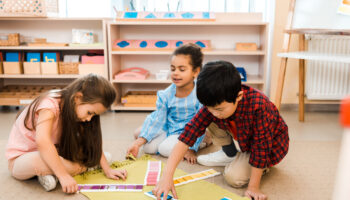Erin DelRegno and Angel Avery-Wright
With STEM careers on the rise, creating makerspaces/centers for children to explore in school-age spaces is a great idea. Pocono Services for Families and Children (PSFY) took this one step further and began focusing on career exploration with their school-age children and building needed skills for jobs; filling out timecards, how to tie a tie, etc. We had the opportunity to speak with Justin Ortiz from PSFY and were given a tour of their Youth Program. This program includes an Apprentice Room that provides children with exposure to a few different careers and gives them opportunities for concrete, hands-on experiences. This room was divided into four areas: cosmetology, woodworking, computer engineering, and fashion design. Below is the brief interview we had with Justin about this room:
What made you decide to incorporate an apprentice room into your program?
I attended a Penn SACCA conference and learned about the large number of apprentice jobs that were vacant. I thought about the low-income families we work with and how many of them cannot afford college. I wanted to find a way to support these families, help the children we work with in learning about trade jobs, and help them to learn new skills and be ready to volunteer and choose careers.
Was it hard to initially incorporate this into the school-age routine? Did the change cause any struggles?
The staff members gathered some supplies they had that the program would need (tools, benches, mannequins). Then, we took about two months getting donations from family, friends, other staff members, and Home Depot. The change was positive.
How is the space used? Is it used as another play area or used for group activities?
It is used for both. It is always open during free choice time, and it is used sometimes for group activities as well as when doing some arts and crafts and STEM group activities. Also, we have other occupation workers come in to talk to the children
What are some benefits you have seen since starting this space?
They are focused on working when in these spaces. They are taking on the roles of people they look up to and are excited to use the tools and materials they can’t use at home. They are learning to work together as a team; they sit down, talk about what’s working, figure out how to fix it if it isn’t working. They have built things for their families and others; they have made benches for their siblings and flower boxes to add to the outdoor garden space. They take pride in their work.
Are there any kinks you are still working out?
We continually look at the set-up of the space and how it is being used by the children to see if any adjustments need to be made. For example, we changed it to one child building at a single table at a time, and we taped off these spaces so there is enough room and no interruptions while the children are working.
How is supervision handled when children are using this room? Are there any safety concerns you have noticed or had to address?
This is trial and error. You get nervous when you first put tools in the hands of the children, but you just need to make the appropriate safety measures, so it is safe for all the children. The main thing is our staff, volunteers, and mentors that work with children in this room; they are always attentive and are involved in what the children are doing.
Why do you believe this is important to have in a school-age program?
Children learn by challenging them and can succeed past what they learn in school. This is our future and we have to invest in it. This is the best opportunity in life to introduce them to everything. How many people are in debt from college or end up switching majors when they end up wanting to do something else. By exposing them to different careers and opportunities, it gives them hope and helps them find out what they actually like to do.
Upon entering the apprentice room, I am not sure what struck us first: the options, the amazing projects, the wonderful staff working with the children, or that the children were so busy and focused on their work. Below are some of our observations from when we saw the children, in action, using the room:
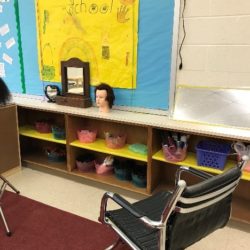
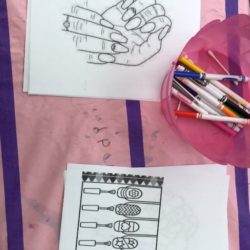
The cosmetology area had curlers, brushes, clips, barrettes, combs and other tools of the trade. Additionally, it was set up with designer heads where children could style hair. A real-life salon chair was placed before a mirror just like it would be in a salon. A small table with chairs was also accessible as a place to design nails. Although real nail polish was not available, as the smell can be harmful, coloring papers with hands and long nails were available for designing.
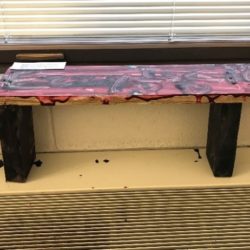
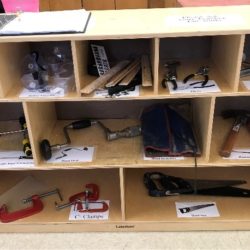
The woodworking area had a wide selection of tools separated by type and were easily accessible. Two worktables were available as well. One child worked on a pre-cut vehicle where she used a screwdriver to put it together. Another child was sawing a wooden board into smaller pieces. The teacher stood nearby and only stepped in when the child needed help. He was there for supervision but allowed the child to explore the wood in her own way. When she said the handsaw was making her tired, the teacher helped hold down the board and finished the cutting of the board. Previous wood projects were displayed, including a bench and flower box.
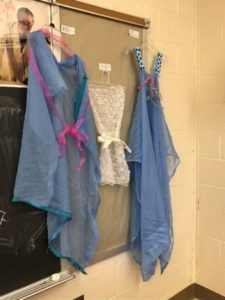
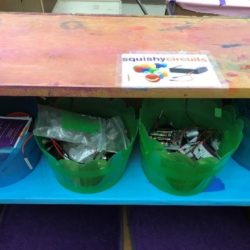
The computer engineering area was originally set up so children could use the computers to understand the world wide web. The children were more interested in taking the computer apart and dissecting the inner components. The children are learning about the different parts that run the computer.
The fashion design area had tools such as needles, trims, fabrics, thread, and scissors. Children were able to hand sew different items and they were displayed on the wall. A sewing machine was also donated to them, but they have not yet been able to get it to work. Other design aspects included in this area as well; some materials and tools were included for floral design and button making.
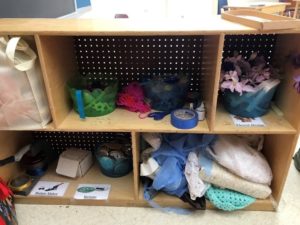
Did the apprentice room get you thinking about what you might like to incorporate into your school-age program? For more information on promoting career readyskills, please visit the following link: Education.pa.gov/K-12 – Pennsylvania Career Ready Skills.
Did this article spark your interest, but you worry because you do not have a separate room available for something like this? Or maybe you want your children’s experiences to be more open-ended and not focused on specific careers? If an apprentice room is not for your program, creating a Makerspace is another way to go. There are a variety of different ways you can incorporate a makerspace into your program; this can be a changing classroom center, bins or boxes can be used, or you can even have a mobile cart that you move in and out of your space daily. Remember, it’s not about the space you use, it’s about the children using creative thinking skills, problem solving, experimenting, collaborating, etc.… learning.
For more information on makerspaces, please visit the resources below and search YouTube for some amazing and informational videos:
What is the point of a makerspace?


